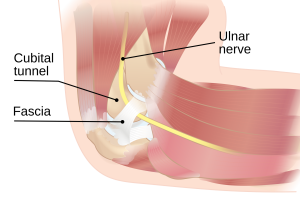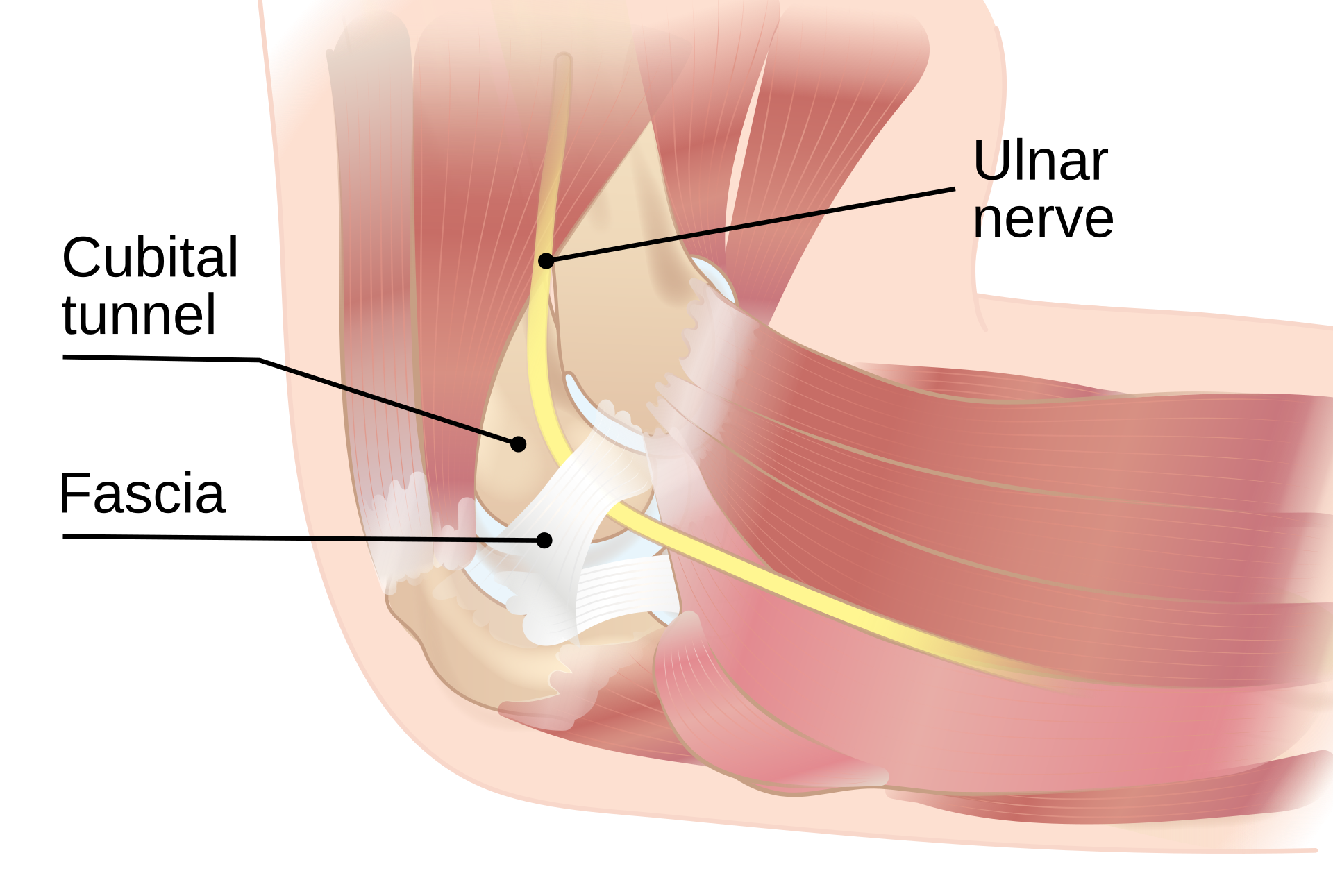Cubital Tunnel Syndrome
 Did you know that your funny bone isn’t a bone? It’s the ulnar nerve. The largest nerve in the body that is not protected by muscle or bone, which is why it is so prone to injury and irritation in the cubital tunnel.
Did you know that your funny bone isn’t a bone? It’s the ulnar nerve. The largest nerve in the body that is not protected by muscle or bone, which is why it is so prone to injury and irritation in the cubital tunnel.
Cubital tunnel syndrome is the second most common peripheral neuropathy of the upper limb, following carpal tunnel syndrome, affecting approximately one in every six adults (Assmus, Antoniadis, & Bischoff, 2015). While carpal tunnel is the irritation or compression of the median nerve at the wrist, cubital tunnel affects the ulnar nerve at the elbow.
Physiotherapy is a non-invasive approach to treating cubital tunnel syndrome and is essential for maintaining or improving patients’ quality of life. This is done using different modalities for pain management, strength and conditioning to restore function and improve grip strength, and range of motion exercise to improve flexibility. Additionally, for those that require surgery, physiotherapy can be used for post-surgical rehabilitation to restore strength, flexibility and function.Read More

Eve is a qualified sports therapist at MacFarlane Physiotherapy.

